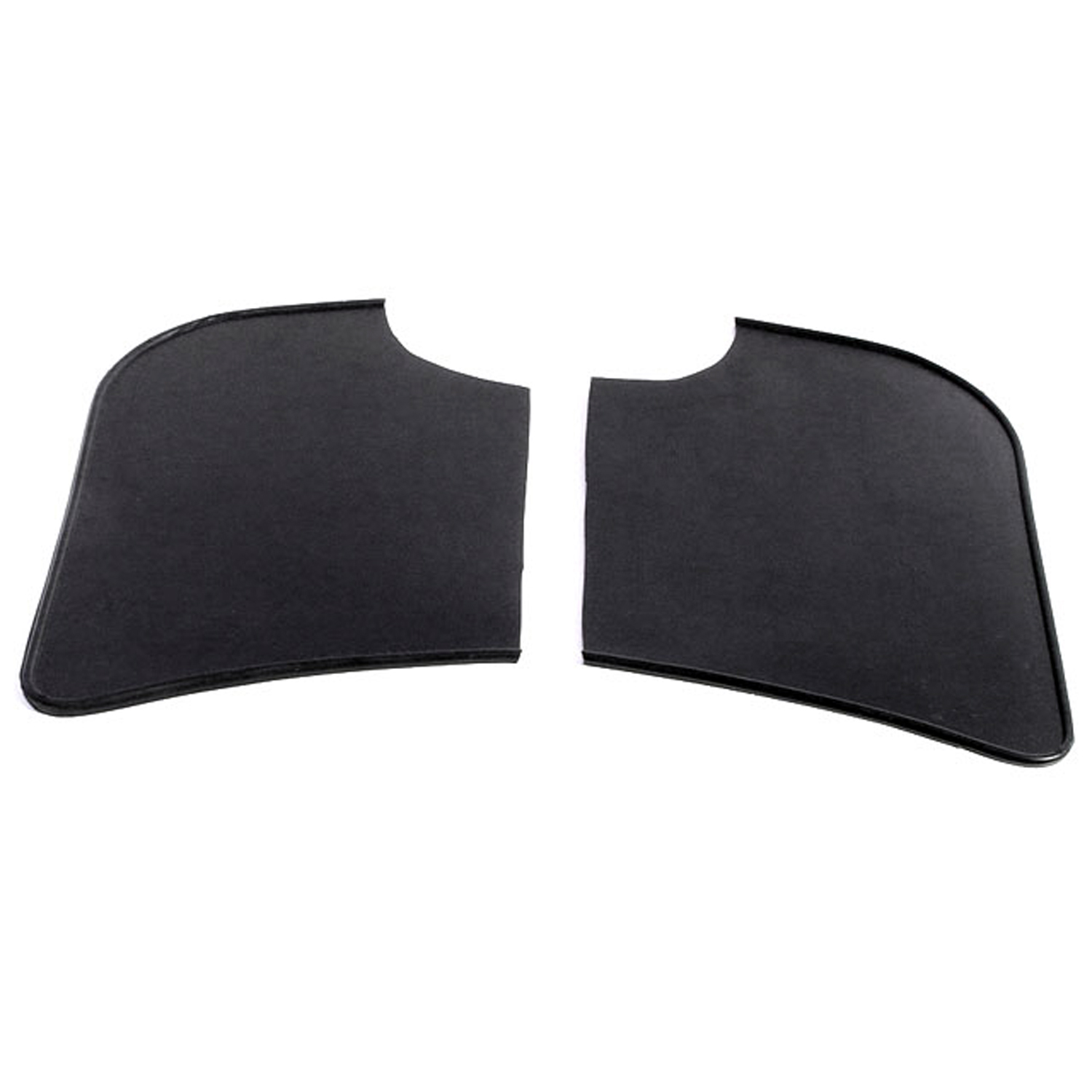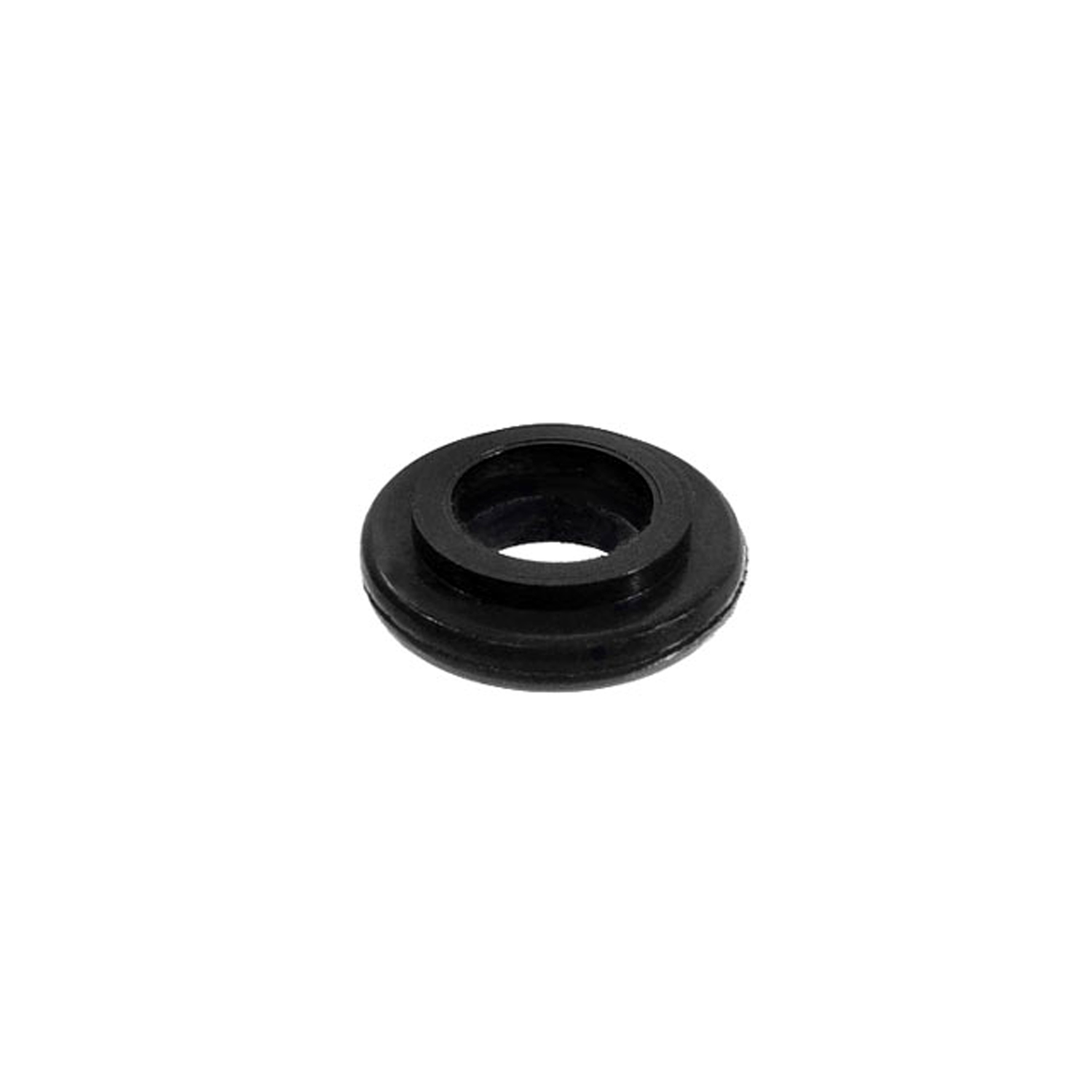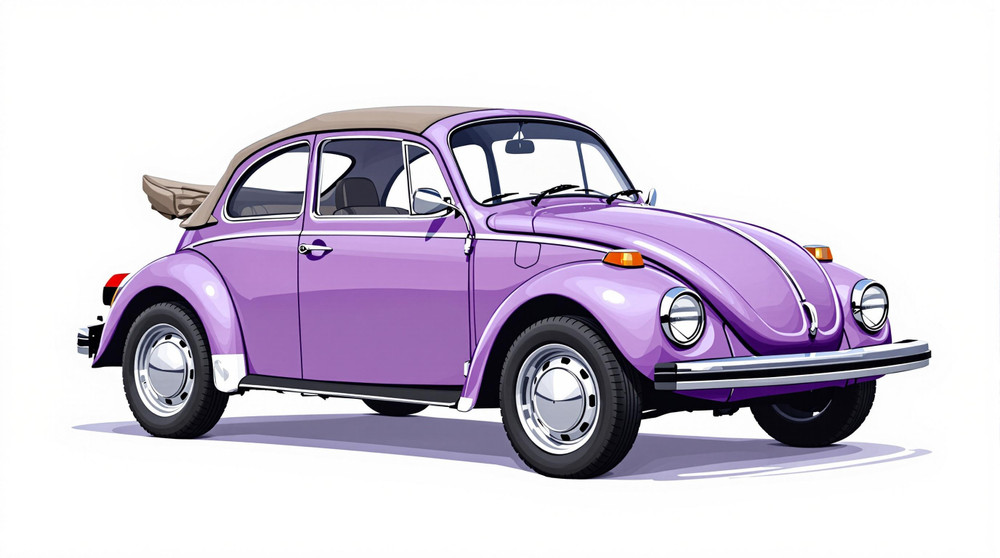Image of 1976 Volkswagen Beetle, Note: These illustrations use artistic license and may differ from actual historical models.
Performance Metrics
Fundamental Metrics
Emotional Appeal
MMP Rating
| Engine Specifications | |
|---|---|
| Engine: | Air-cooled, rear-mounted, flat four |
| Displacement: | 1584cc |
| Horsepower: | 48-50 hp |
| Torque: | 73 lb-ft |
| Compression Ratio: | 7.5:1 |
| Ignition System: | Distributor ignition |
| Cooling System: | Air-cooled |
| Performance Specifications | |
| 0-60 Time: | 18.6 seconds |
| 1/4 Mile Time: | 20.3 seconds |
| Top Speed: | 81 mph |
| Transmission and Drive | |
| Drive Type: | Rear-wheel drive |
| Transmission Type: | 4-speed manual |
| Fuel and Efficiency | |
| Fuel System Type: | Carburetor |
| MPG: | 25-28 mpg |
| Dimensions and Brakes | |
| Brakes: | Front disc, rear drum |
| Wheelbase: | 94.5 inches |
| Weight: | 1,984 lbs |
Note: Specifications for classic cars are given to the best of our ability, considering the limited and variant data available.
1976 Volkswagen Beetle: A Timeless Icon of Automotive History
The 1976 Volkswagen Beetle is not merely a car; it's a cultural icon that encapsulates the spirit of an era. Born from the innovative mind of Ferdinand Porsche and the economic demands of pre-war Germany, the Beetle—or 'Bug' as affectionately known in the US—emerged as a symbol of simplicity and reliability. Its distinctive rounded shape and air-cooled rear engine became hallmarks of an unconventional yet endearing automotive design. A unique fact that might surprise many is that the 1976 model year marked one of the final years for the original Beetle's production in Europe, making it a significant piece in the car's storied legacy.
Design and Innovation
The exterior of the 1976 Beetle maintained its classic curves and prominent fenders, a design so timeless that it remained largely unchanged since its inception in the late 1930s. The interior was modest yet functional, with durable materials meant to withstand years of use. Technologically, it boasted an efficient air-cooled flat-four engine, a testament to innovation focused on simplicity and ease of maintenance. Color options ranged from vibrant hues to more subdued tones, with Mars Red and Miami Blue being among popular choices that highlighted the vehicle's playful character. The most iconic body style was undoubtedly the two-door sedan, which captured hearts with its practicality and charm.
Historical Significance
The 1976 Beetle stands as a testament to Volkswagen's commitment to affordability and functionality. It diverged from American muscle cars' focus on power and size, instead offering a fuel-efficient alternative during a time when oil crises had made economy a priority. Its lasting influence can be seen in the countless small, efficient cars that followed in its tread marks, paving the way for the compact car segment.
Performance and Handling
With a modest top speed around 80 mph and leisurely acceleration from 0-60 mph taking around 18 seconds, performance was not the Beetle's forte by modern standards. However, its handling was nimble for its day, capable of navigating city streets with ease. Drivers often recall the distinctive hum of its air-cooled engine and the straightforward driving experience that connected them directly to the road—a stark contrast to today's more insulated rides.
Ownership Experience
The '76 Beetle was versatile—a daily driver for some, a collector's item for others, and even a racing vehicle for enthusiasts modifying it for improved performance. Its simplicity meant that maintenance could often be performed by owners themselves, contributing to its reputation for reliability. Despite this, common criticisms included lack of power and amenities that by then were standard in other vehicles.
Fun Facts
The Beetle has been owned by celebrities ranging from Ted Bundy to Ewan McGregor, showcasing its broad appeal. While not known for breaking speed records, it did set records for sales, becoming one of the best-selling cars worldwide. It also made numerous appearances in films and was even featured as a character named 'Herbie' in Disney movies.
Collector's Information
Today, collectors might find a well-preserved 1976 Volkswagen Beetle valued between $5,000 to $15,000 depending on condition and originality. With over 21 million Beetles produced over its lifespan, rarity varies; however, specific '76 features can add interest among collectors. The value has generally appreciated over time as nostalgia fuels demand for this automotive piece of history.
Conclusion
The 1976 Volkswagen Beetle is more than just a car; it is an enduring emblem of ingenuity and resilience. Its design has transcended time; its impact on automotive history remains indelible. For those who own one today or aspire to, it represents not just transportation but also a journey through time—a testament to when driving was simpler, yet every bit as joyful.
1976 Volkswagen Beetle Catalog of Parts
 1976 Volkswagen Beetle Gravel Shields. Molded flat without metal backing plates-FS 40Gravel Shields. Molded flat without metal backing plates. Apply with contact cement. 7-5/8" long X 5-5/8" wide at top. Pair
1976 Volkswagen Beetle Gravel Shields. Molded flat without metal backing plates-FS 40Gravel Shields. Molded flat without metal backing plates. Apply with contact cement. 7-5/8" long X 5-5/8" wide at top. Pair 1976 Volkswagen Beetle Oil Cooler Seal. 7/16" I.D., 7/8" O.D. Each-RP 8-BOil Cooler Seal. 7/16" I.D., 7/8" O.D. Each
1976 Volkswagen Beetle Oil Cooler Seal. 7/16" I.D., 7/8" O.D. Each-RP 8-BOil Cooler Seal. 7/16" I.D., 7/8" O.D. EachWhy Choose Metro?
For over 100 years, Metro Moulded Parts has been the pinnacle of quality in classic car restoration parts. Our commitment to precision and authenticity in every component ensures a perfect fit and an OEM-level appearance.
- Expert Craftsmanship & Quality: Each part is a testament to our dedication to reliability and perfection, crafted from original designs and thoroughly tested.
- Advanced Technology: We use cutting-edge techniques to create flawless, long-lasting parts that surpass others in performance.
- SuperSoft Sponge – The Ultimate Door Seal: Not only are our door seals 30% softer than competitors', but they're also guaranteed to never leak. They effectively reduce wind and road noise, enhancing your classic car's comfort and driving experience.
- Proudly American: Our parts are a product of American craftsmanship, made in the USA with a spirit of excellence and heritage.
- Unrivaled Warranty: We back our products with a 30-year industry-leading warranty, a testament to our confidence in their quality.
Join us in preserving the legacy of classic cars with parts that are crafted for perfection, not just made.

